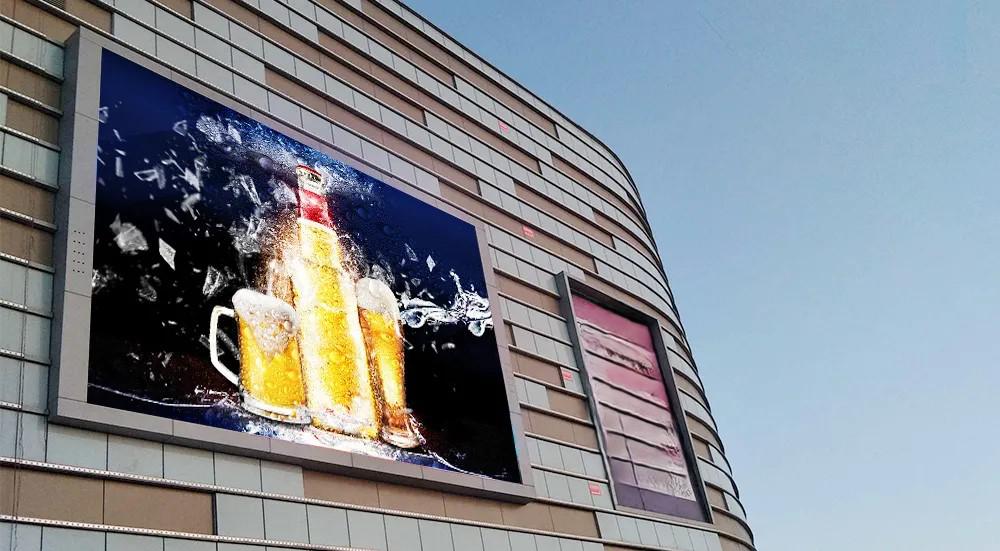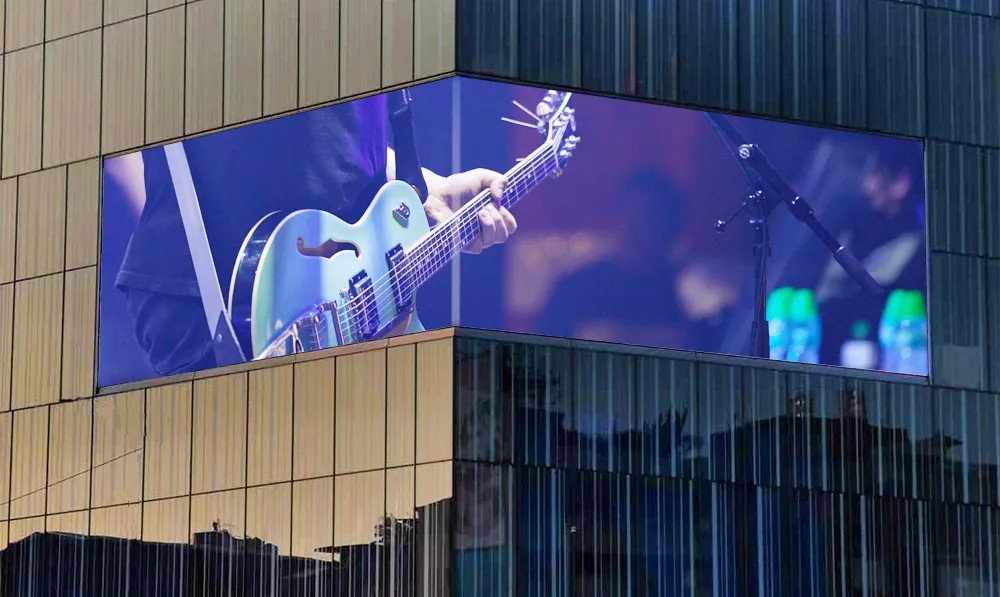the rapid progress of modern society, the application of LED display is becoming more and more widespread. However, the waterproof performance of LED display has also attracted wide attention, especially for outdoor LED display. Do you know anything about the waterproof rating of LED display enclosure? cailiang, as a professional LED display manufacturer, will introduce the waterproof knowledge of LED display in detail for you.
Waterproof grade classification of outdoor LED display:
The protection class of the display is IP54, IP is the marking letter, the number 5 is the first marking digit and 4 is the second marking digit. The first marking digit indicates the contact protection and foreign object protection level, and the second marking digit indicates the waterproof protection level. It should be noted in particular that the second characteristic digit after IP, 6 and below, the test is progressively stricter as the digit becomes larger. In other words, LED displays marked as IPX6 can pass the tests of IPX5, IPX4, IPX3, IPX2, IPX1, and IPX0 at the same time.The test of the second characteristic digit 7 or 8 after IP is two types of tests with 6 and below. In other words, the marking of IPX7 or the marking of IPX8 does not mean that it also complies with IPX6 and IPX5 requirements. LED displays that simultaneously meet IPX7 and IPX6 requirements can be labeled as IPX7/IPX6
Waterproof outdoor LED displays is crucial:
First of all, outdoor displays need to cope with humid environments, so effective waterproof measures and routine maintenance are necessary. Especially during the rainy season, ensuring that the display is properly sealed and installed can dramatically reduce the likelihood of water ingress. Regularly removing dust from the surface of the display not only helps dissipate heat, but also reduces the condensation of water vapor.
Humidity on the LED display can lead to a variety of failures and damage to the lamps, so preventive measures in the production and installation stage is particularly critical, and should seek to avoid these problems at the initial stage.
In practice, high humidity environment will make the PCB board, power supply and wires and other components of the LED display easy to oxidize and corrode, which will lead to failure. For this reason, the production should ensure that the PCB board after anti-corrosion treatment, such as coating three-proof paint; at the same time choose high-quality power supply and wires. The selected waterproof box should be well sealed to ensure that the screen at least IP65 protection level. In addition, the welding parts are susceptible to corrosion, and should be particularly strengthened protection, while the framework of easy rust rust rust treatment.
Secondly, for different unit board materials, you need to use professional waterproof coating, here outdoor P3 full color outdoor LED display as an example. When considering the waterproof treatment of outdoor P3 full color LED display, first verify whether its unit board is fixed by magnet or screw. Generally speaking, screw fixing provides more stable results, while the fixing effect of magnets is relatively weak. Next, check whether the unit board is equipped with a waterproof groove; if it is equipped with a waterproof groove, the waterproofing of the front side will not be too much of a problem even if the magnet fixing method is used. In addition, it is also crucial to pay attention to the waterproof performance of the outdoor LED display backplane. The backplane not only has to deal with heat dissipation, but also needs to have good waterproof performance. When dealing with the back panel, special attention should be paid to the waterproof and heat dissipation ability of the aluminum composite panel. It is recommended that holes be punched under the aluminum composite panel using an electric drill to set up drainage ports, which not only helps waterproofing, but also helps heat dissipation, so as to maintain the best performance of the display.
In addition, at the specific construction site, the structural design should incorporate waterproofing and drainage features. After the structure is determined, select sealing strip materials with low compression deflection rate and high tearing elongation rate to adapt to the characteristics of the structure. Based on the properties of the selected material, design the appropriate contact surface and bearing strength to ensure that the seal is tightly extruded and forms a dense structure. Focused protection should also be provided in the details of installation and waterproofing grooves to avoid the problem of internal water accumulation due to structural defects during the rainy season, so as to ensure the long-term stable use of the display.
Maintenance of LED displays is especially important in environments with high humidity and temperature, especially if the dehumidification function is turned on regularly. Whether the display is installed indoors or outdoors, the best moisture prevention strategy is to keep it running regularly. The display generates heat when it is operating, which helps to evaporate some of the moisture, thereby significantly reducing the risk of short circuits due to humid conditions. In general, displays that are used frequently are more resistant to the effects of humidity than displays that are used less frequently. Industry experts recommend that LED displays be turned on at least once a week during the humid season, and that screens be activated and kept bright for more than 2 hours at least once a month.
Post time: Jul-12-2024









